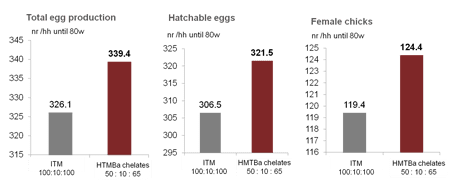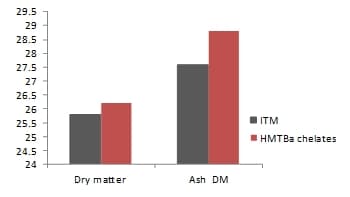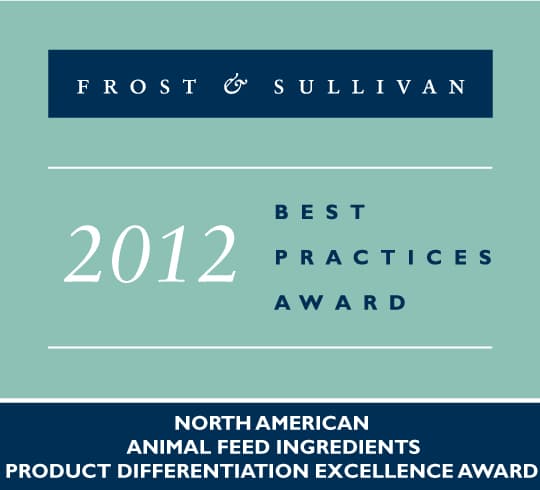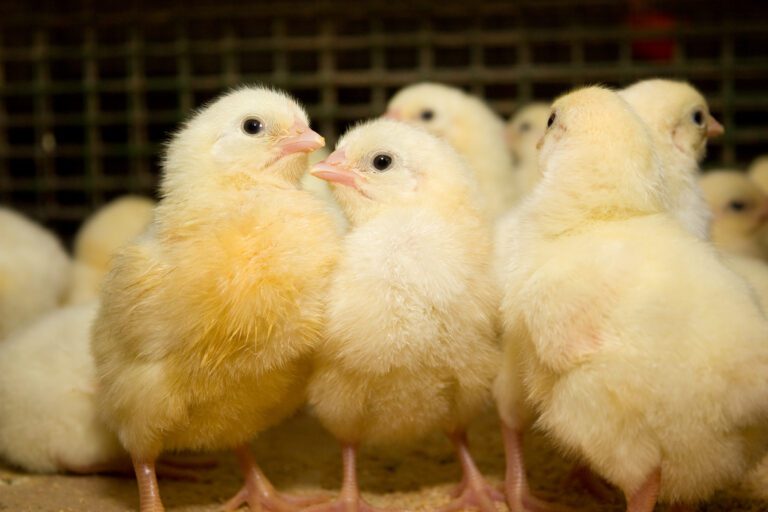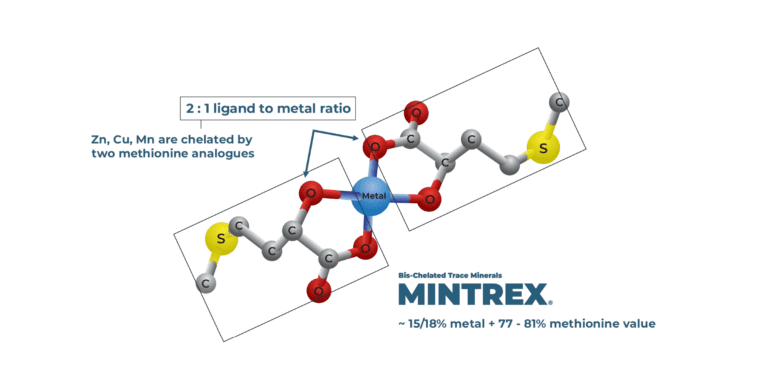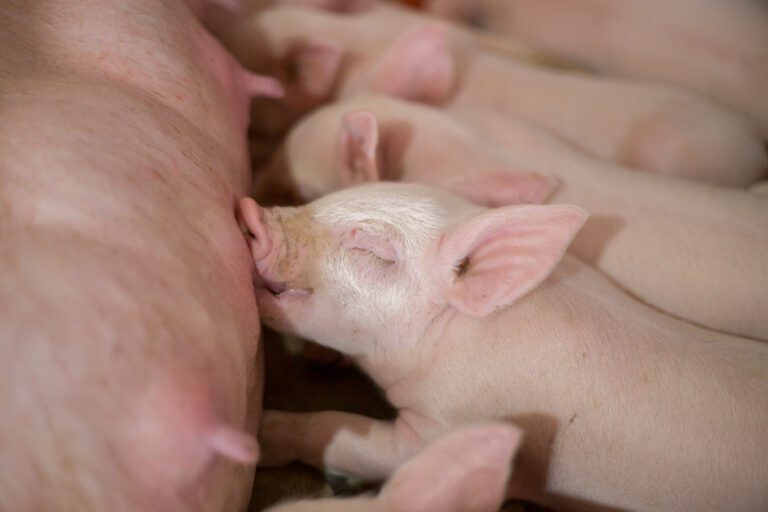MINTREX® Trace Minerals in Breeders
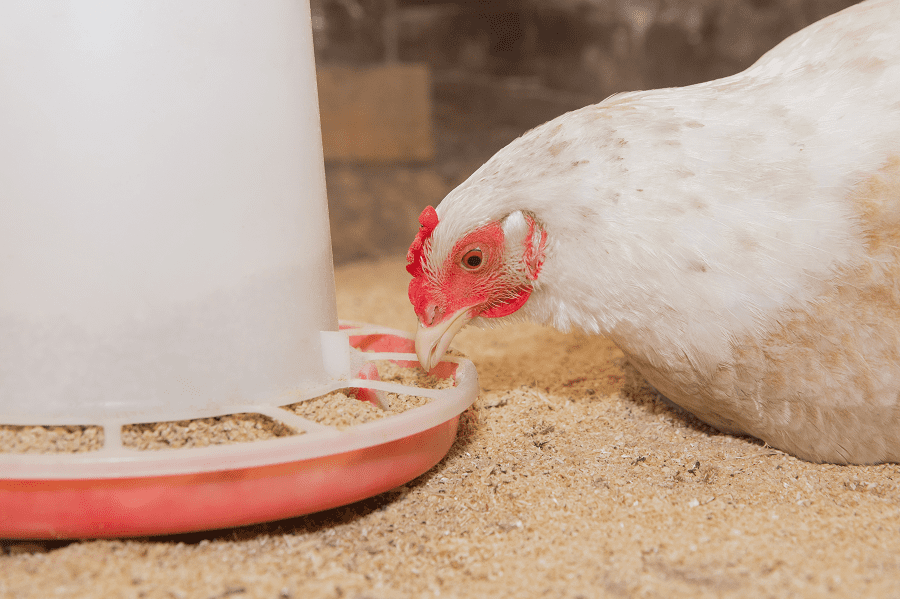
Take a Closer Look at Your Breeder Minerals
The options are vast when it comes to choosing a trace mineral source for your breeder diets. The performance from MINTREX® chelated trace minerals is a sure bet. Unlike other mineral sources, every molecule of MINTREX is chelated with two molecules of HMTBa (a methionine hydroxy analog), protecting the mineral until it gets to its deposition site. When minerals are better absorbed by the animal, they can be put to good use in supporting breeders and their developing chicks. Take a closer look at what MINTREX chelated trace minerals can do for your breeder operation.
See a recent article published in Feedstuffs (December 16, 2013) titled, “HMTBa chelates play role in trace mineral nutrition”.
The trace minerals of Zinc, Copper and Manganese play crucial roles in connective tissue development, in particular cartilage, collagen and elastin for bone and egg shell structure. Since MINTREX trace minerals are chelated, they are protected in the gut environment from dietary antagonisms, unlike inorganic salts. This allows the minerals to be used to their maximum potential to develop strong bones, articulations and egg shells, thus supporting breeder longevity.
Each unhatched egg is profit lost to a breeder producer. Trace mineral functions in egg development demand certainty that the source can be trusted. Recent research shows an increase in total egg production (4.1%) and hatchable eggs (4.9%) when MINTREX was used compared to inorganic sources across a production cycle of 80 weeks. Similar results are confirmed in a broad range of genetic breeds.
It is essential that the developmental health of an embryo is looked after from day one. Production of a sound collagen structure early on in development will lead to healthy skeletal growth. The extent to which trace mineral sources affect embryo development can be measured by observing bone mineralization. Studies have repeatedly shown that yolk trace mineral content, and subsequently tibia dry matter and ash content of day old chicks to be higher when breeders were fed diets containing MINTREX chelated trace minerals over inorganic sources.
Effect of mineral source fed breeders on tibia ash content from day old chicks
Y-axis: tibia composition (%)
MINTREX delivers on the promises of a highly bioavailable, differentiated mineral product. But what does this mean beyond the biological functions of trace minerals? The high absorption rate of MINTREX means less mineral will be excreted into the environment. Not only is this a sustainable benefit, it is also a cost savings. Additionally, because MINTREX is chelated with HMTBa, it carries a complimentary methionine value. These added benefits allow nutritionists to use the “Reduce and Replace” strategy in order to maintain performance while reducing mineral and methionine inclusion rates.

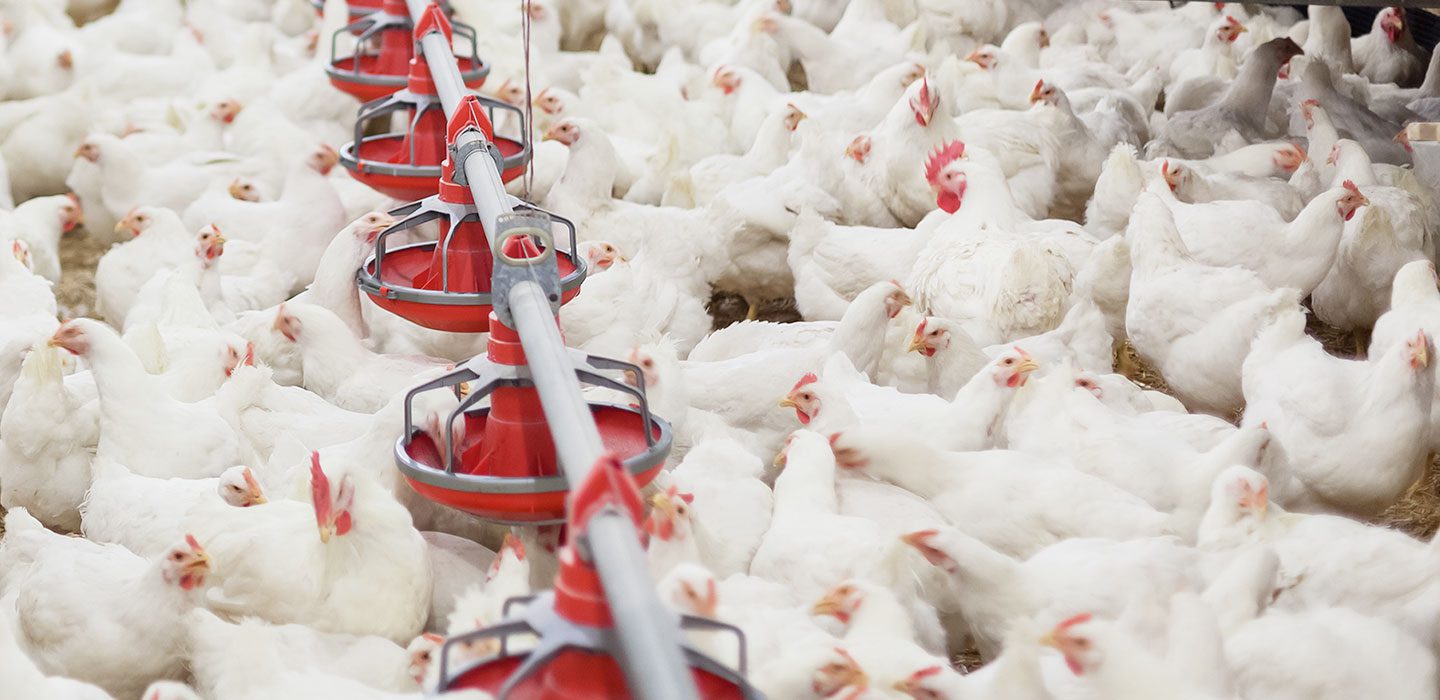
Intelligent Nutrition for Your Business
More science. More insight. More inspiration. More ways for you to feed the world.

